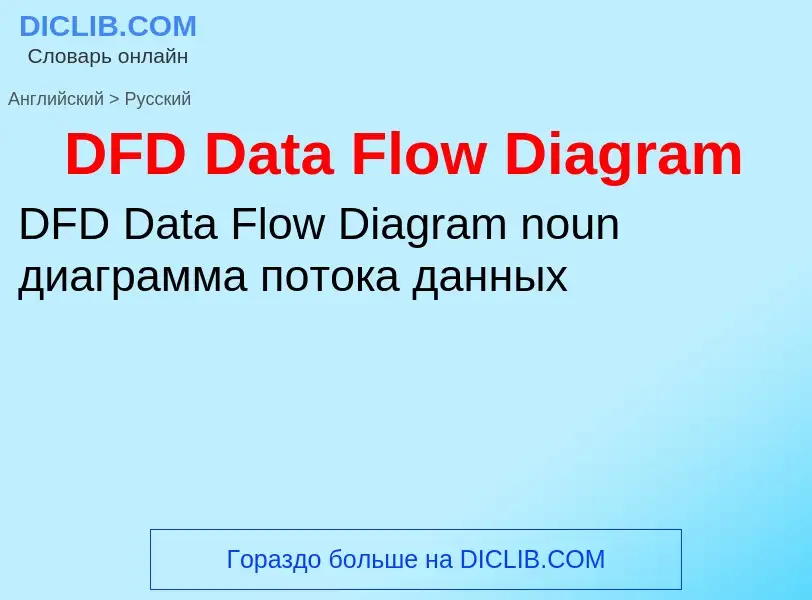Translation and analysis of words by ChatGPT artificial intelligence
On this page you can get a detailed analysis of a word or phrase, produced by the best artificial intelligence technology to date:
- how the word is used
- frequency of use
- it is used more often in oral or written speech
- word translation options
- usage examples (several phrases with translation)
- etymology
DFD Data Flow Diagram - translation to English
общая лексика
поток данных
общий термин, относящийся к алгоритмам или архитектурам параллельных вычислений, в которых выполнение каждой операции производится при готовности всех её операндов, при этом последовательность выполнения команд заранее не задаётся. Впервые графическую модель вычислений, управляемых потоком данных, предложил в 1968 г. в своей докторской диссертации сотрудник Стэнфордского университета Дуайн Эдэмс (он же ввел термин dataflow)
синоним
Смотрите также
Definition
Wikipedia
A data-flow diagram is a way of representing a flow of data through a process or a system (usually an information system). The DFD also provides information about the outputs and inputs of each entity and the process itself. A data-flow diagram has no control flow — there are no decision rules and no loops. Specific operations based on the data can be represented by a flowchart.
There are several notations for displaying data-flow diagrams. The notation presented above was described in 1979 by Tom DeMarco as part of structured analysis.
For each data flow, at least one of the endpoints (source and / or destination) must exist in a process. The refined representation of a process can be done in another data-flow diagram, which subdivides this process into sub-processes.
The data-flow diagram is a tool that is part of structured analysis and data modeling. When using UML, the activity diagram typically takes over the role of the data-flow diagram. A special form of data-flow plan is a site-oriented data-flow plan.
Data-flow diagrams can be regarded as inverted Petri nets, because places in such networks correspond to the semantics of data memories. Analogously, the semantics of transitions from Petri nets and data flows and functions from data-flow diagrams should be considered equivalent.

